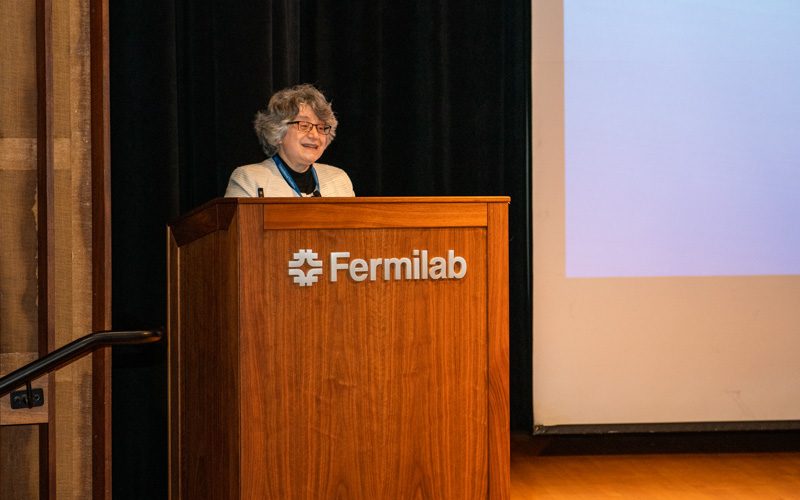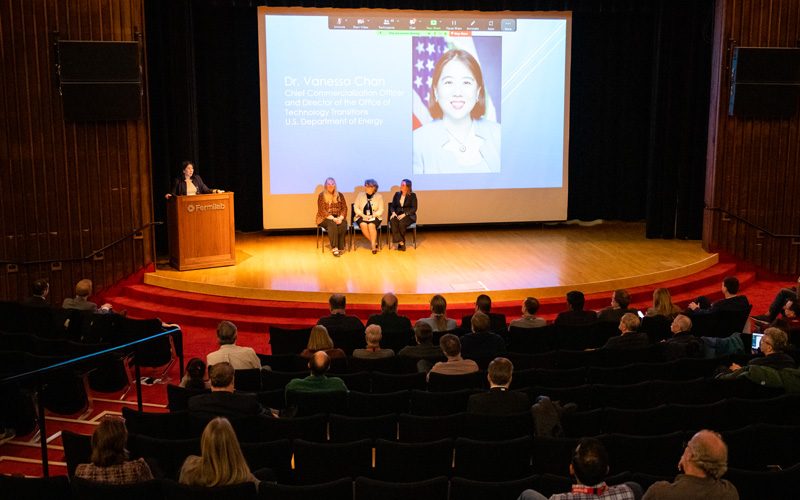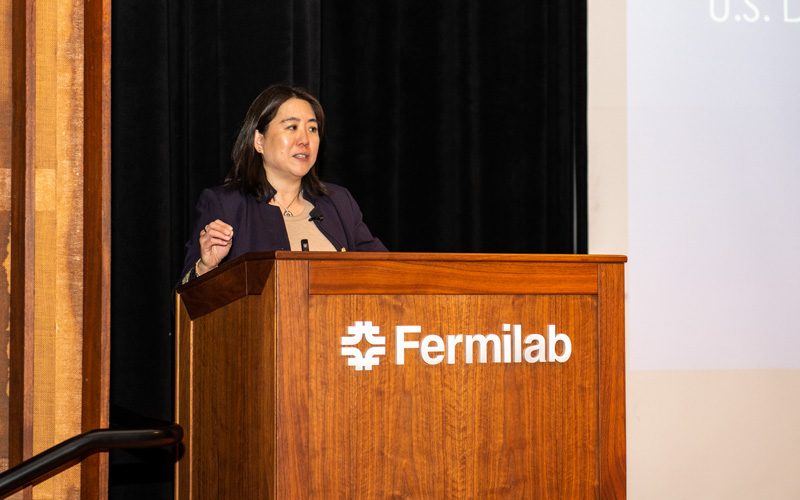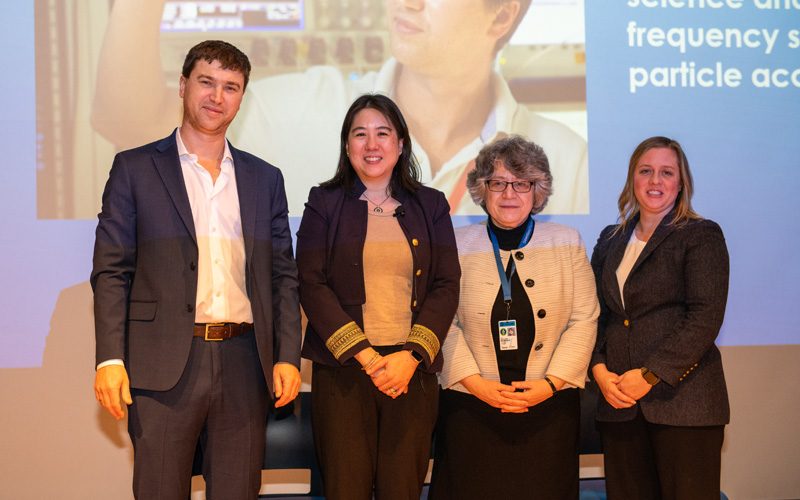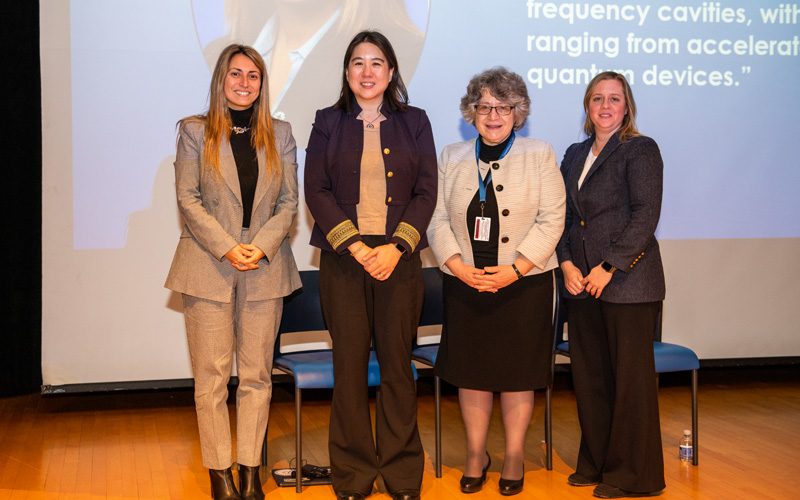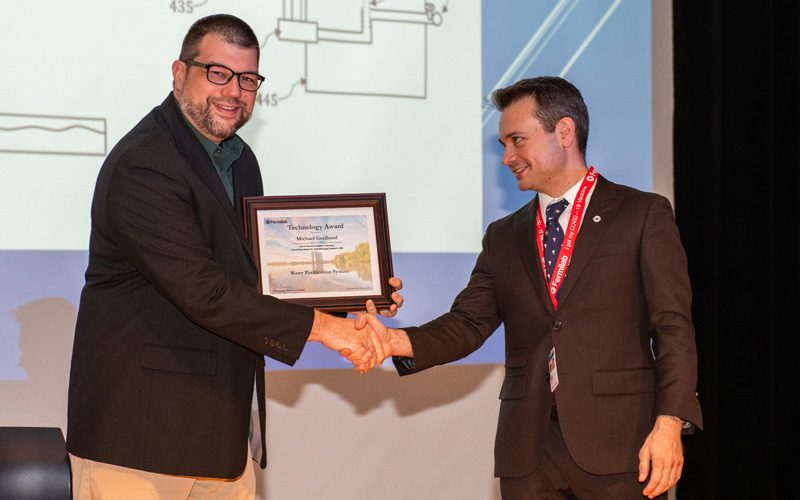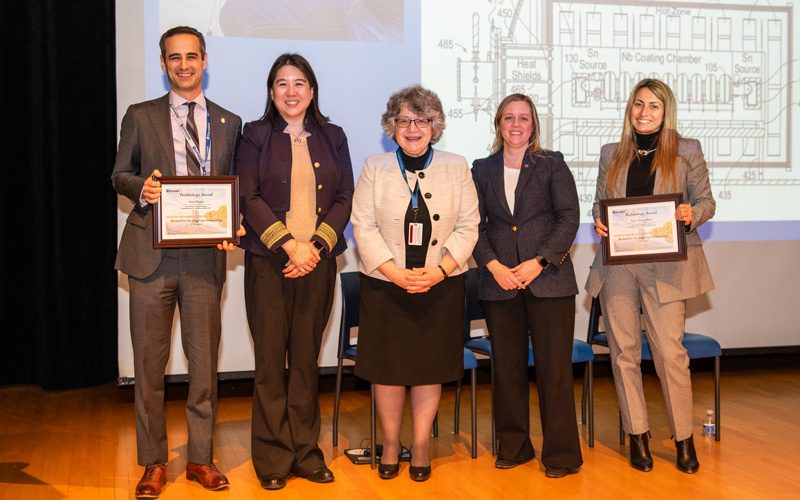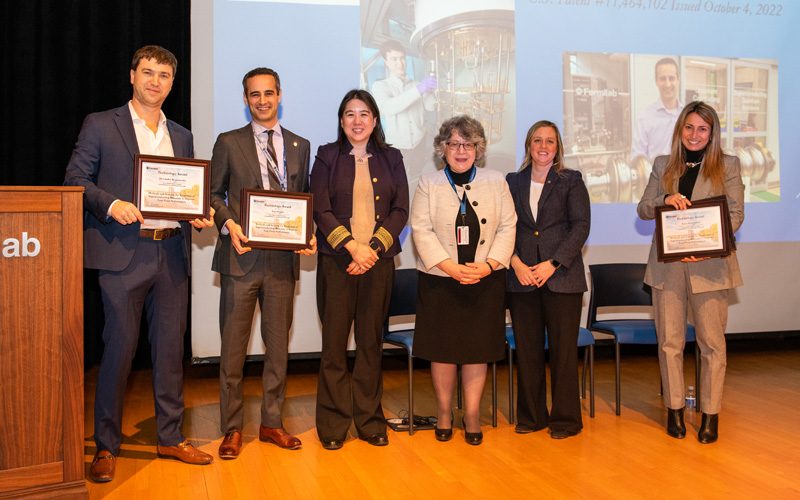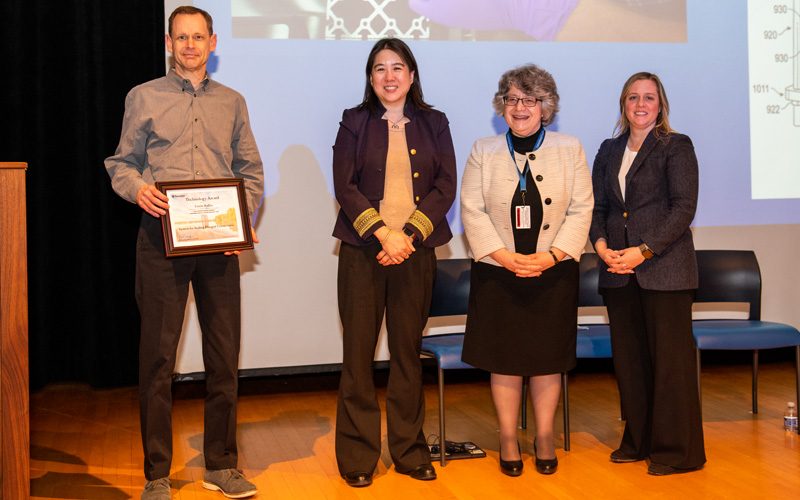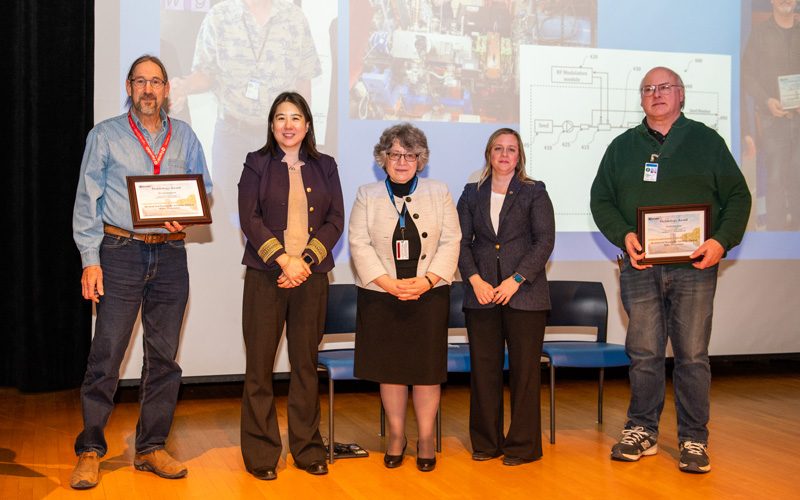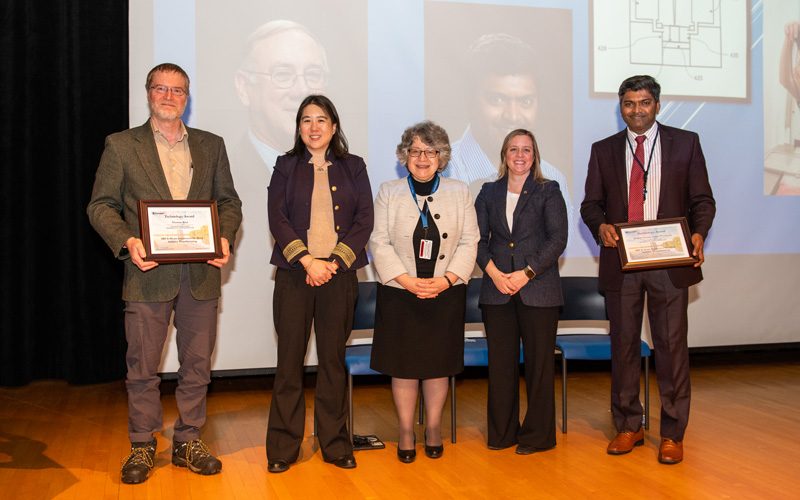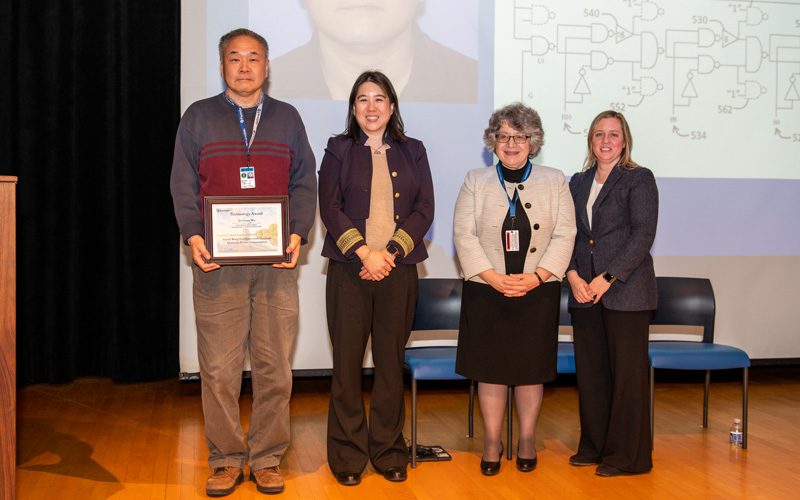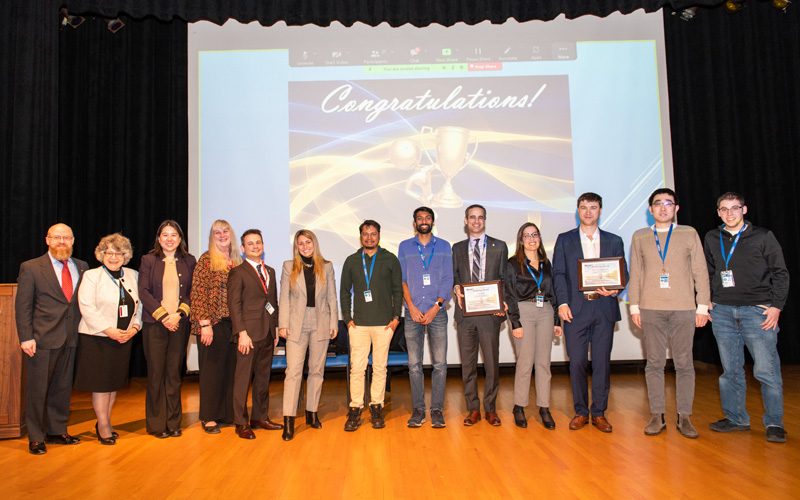For the first time in three years, the Department of Energy’s Fermi National Accelerator Laboratory leaders, researchers and staff met in-person on site for the 10th anniversary of Fermilab’s Inventor Recognition Ceremony on Feb. 23, 2023. Hosted by the lab’s Office of Partnerships and Technology Transfer, or OPTT, the event celebrated employees who earned patents and submitted records of invention during 2022.
After welcoming everyone back in-person since the 2019 ceremony, Fermilab’s Head of OPTT Cherri Schmidt highlighted the growth of innovation and entrepreneurship at Fermilab over the last 10 years. Schmidt proudly highlighted that the dedicated investments made are now paying off, resulting in a rise in technology transfer. Ten years ago, Fermilab only had six active patents. Today, it has almost 50, with more in development. Also, 65 people have graduated from entrepreneurial training programs sponsored by DOE. The lab currently boasts 15 inventors with more than one patent, including two commercial licenses and one spin-off company.
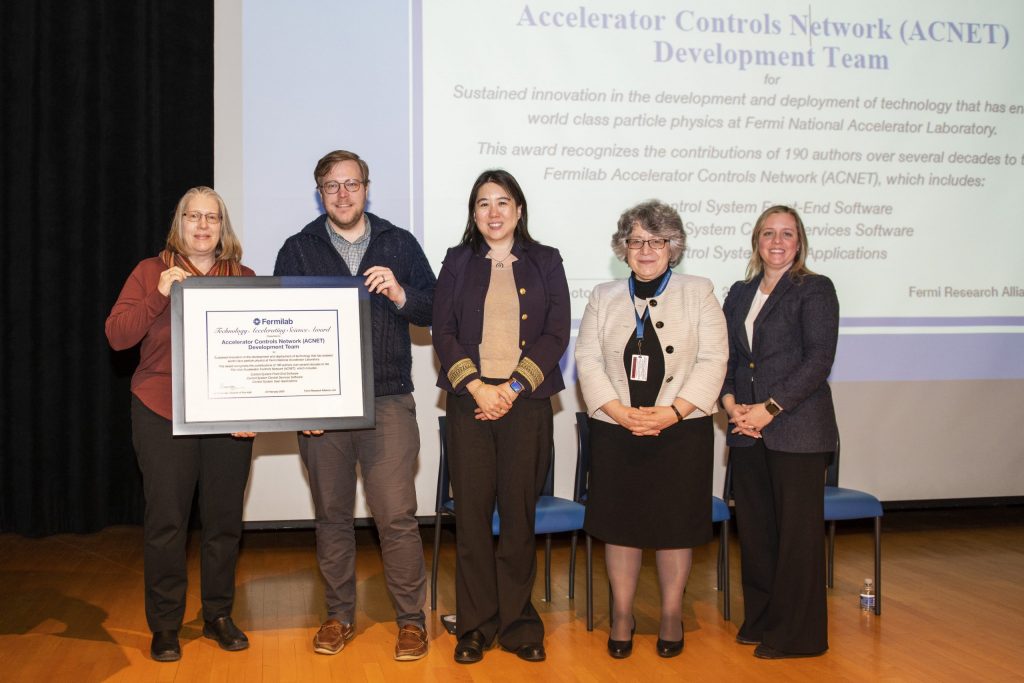
Representing the Accelerator Controls Network development team, Denise Finstrom and Beau Harrison received the ACNET award. Pictured with them are DOE Chief Commercialization Officer Vanessa Chan, Fermilab Director Lia Merminga and Deputy Fermi Site Manager Whitney Begner. Photo: Ryan Postel, Fermilab
Vanessa Chan, chief commercialization officer for DOE and director of the Office of Technology Transitions, attended the ceremony as a special guest. In her remarks, Chan cited that OTT programs have trained 191 teams across 12 national labs that have raised more than $150 million in external funding.
“It’s national lab researchers like yourselves that assess real-world opportunities for the research while building commercialization and entrepreneurial skills,” said Chan. “We recognize and understand that this cornerstone work you all are doing is setting the pace for technological innovation for the United States of America. It is because of Fermilab’s neutron therapy that the first proton therapy facility at Loma Linda University Medical Center has treated more than 30,000 patients. You literally are saving lives, while you’re figuring out the meaning of the universe.”
From innovation to invention
Throughout 2022, Fermilab researchers received eight patents. Another 37 disclosures were submitted to the Fermilab Office of Partnerships and Technology Transfer, further expanding the lab’s intellectual property portfolio. The disclosures are the first step in developing technology transfer with industry engagements. Last year, Fermilab obtained eight issued patents for the following projects:
- Michael Geelhoed on his water purification system
- Sam Posen and Anna Grassellino for method for treating superconducting cavities
- Alexander Romanenko, Sam Posen and Anna Grassellino for methods and systems for treatment of superconducting materials to improve low field performance
- Curtis Baffes for a system for sealing flanged connections
- David Johnson and Todd Johnson for method and system for arbitrary optical pulse generation
- Thomas Kroc for permanent magnet e-beam/X-ray horn
- Robert Kephart, Jayakar Charles Tobin Thangaraj and Thomas Kroc on SRF e-beam accelerator for metal additive manufacturing
- Jin-Yuan Wu for the gated ring oscillator with constant dynamic power consumption
The ceremony also recognized 16 new disclosure technologies involving more than 40 inventors.
A new award category, which spotlights the significant advances of accelerator science at Fermilab, was announced. The Technology Accelerating Science Award recognizes the extraordinary achievements of software creators over several decades by more than 190 individual authors. The inaugural award honored the Fermilab Accelerator Controls Network, or ACNET, development team for its sustained innovation in the development and deployment of technology that has enabled world-class particle physics.
Other awards acknowledged
In 2022, Fermilab researchers received the following prestigious awards and were recognized for their achievements at the Feb. 23, ceremony:
The 2022 Particle Accelerator Science and Technology Award from the Institute of Electrical and Electronic Engineers Nuclear and Plasma Sciences Society went to Alexander Romanenko for his outstanding contributions to science and technology of radio frequency superconductivity for particle accelerators.
Last February, the Smithsonian featured Jessica Esquivel during Women’s Futures Month at the #IfThenSheCan exhibit with a life-size 3D statue of herself in Smithsonian gardens, along with 119 other women who have excelled in STEM. The debut exhibit strived to demonstrate that women have successfully thrived in STEM careers for decades. It also personified the many role models available to young women today.
Anna Grassellino received the Breakthrough Prize Foundation’s New Horizons in Physics Prize for her work and impact in particle accelerator technology and quantum information science. This discovery of major performance enhancements to niobium superconducting radio-frequency cavities has applications ranging from accelerator physics to quantum devices.
“On behalf of the lab leadership team and community, I thank you for establishing a spirit of innovation and entrepreneurship at Fermilab,” said Lia Merminga, Fermilab director. “I would like Fermilab to have an impact beyond physics by considering how we can apply our inventions and software to address national priorities in energy environment, manufacturing, health care and other industries.”
Fermi National Accelerator Laboratory is supported by the Office of Science of the U.S. Department of Energy. The Office of Science is the single largest supporter of basic research in the physical sciences in the United States and is working to address some of the most pressing challenges of our time. For more information, please visit science.energy.gov.




